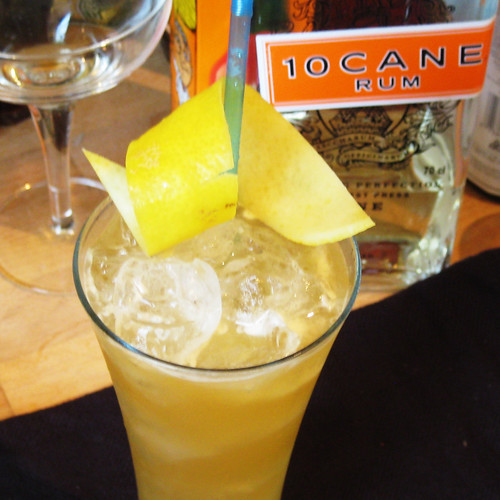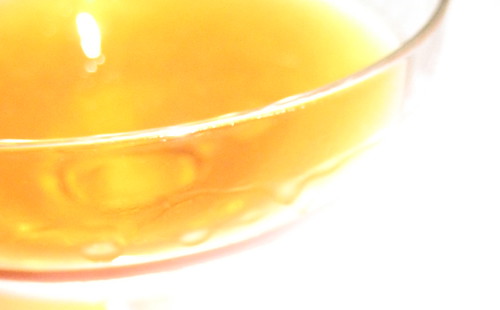MxMo: Tea
In which the Company marks the true beginning of the mixological year in true British fashion.
Read MoreIf I'm honest, this started out as more of a kitchen special. I recently had the privilege of having my flat inspected by my landlord and in my attempts to make the place look more safely habitable, I turned all kinds of interesting things. There were newspapers dating back to 2007, a stack of comics as big as a five-year-old child, and most intriguingly for the purposes of this post, an airtight jar full of vanilla chai teabags. Masala chai is a blend of tea and aromatic spices that originated in the Indian Subcontinent, usually served heavily sweetened with milk. The practice of adding spices, combined with the increased proportions of milk and sugar, drew disapproval from India's colonial masters but the popularity of spiced tea seems to have outlasted the Empire. These days, masala chai style drinks are available in coffee shops everywhere - Starbucks, Costa, the usual suspects - though the actually chai component tends to be a bit of a cheat. Starbucks, for example, uses a spiced and sweetened tea-based syrup for its Chai Lattes and other commercially available syrups and teabags tend to include nontraditional flavours like chocolate or vanilla.
Just like my teabags! For some reason, I immediately thought of adding rum.

West India Company
50ml 10 Cane Rum
50ml sweetened vanilla chai (black)
25ml lemon juice
Shake all ingredients with ice and strain into ice-filled glass. Garnish with a lemon zest twist.

There are a number of things I want to talk about.
On the first, I really don't need a lot of encouragement to play around with Martini variations. I'm on the record saying that I think the Martini is a great drink but the current fashionable serve - vodka with next-to-no vermouth and no bitters - is hard work. So, honestly, the mere possibility of more cocktail reading and free gin (free gin!) is another carrot.
On the second, tea is really gaining some traction as an ingredient in mixed drinks. Any unbelievers should check out Charlotte Voisey's presentation on the theme from Tales of the Cocktail 2008. Different teas cover a wide spectrum from airy and floral to dark and pungent, and can be used to compliment a range of spirits and flavours.
There's a subtle coming together of themes on the way.

Basically, I wanted to use some white tea to compliment the camomile and citrus notes of Tanqueray No. Ten. To break it down to the most basic level, tea comes in three ways: black tea, where the leaves are left to fully oxidise; green tea, where the leaves are partially oxidised; and white tea, where the leaves are prevented from oxidising. According to Wikipedia - home of facts - the best examples of the highest grade white teas are said to be picked from undamaged and unopened buds in China's Fujian province between March 15 and April 10. When it's not raining. Curiously, white tea doesn't seem to be as popular worldwide as green, black tea or oolong. The next step was to find a way to infuse the tea flavour into the cocktail.
Rather than just adding x-ml of traditionally made white tea into a mixing glass, I decided to make a more concentrated infusion - soaking two bags in 150ml of vodka (I used Absolut, being the only plain vodka I had lying around) with a vanilla pod over a low heat for about three minutes. When I say low, I mean flames barely visible on the hob. The last thing you want to do with a spirit infusion is start another fractional distillation. With that done, I played things pretty traditionally. Being a martini for cocktail geeks, I've paid special attention to things like the starting temperature of ingredients and the specific amount of time they should be stirred for. Not because I particularly wanted to, but everyone else has...

A Barbore Martini
60ml Tanqueray No. Ten (at room temperature)
10ml Punt E Mes (from the fridge)
15ml White Tea infusion (from the fridge)
1 drop Angostura Aromatic Bitters
First, stick a small martini glass or a coupette in the freezer. Stir all the ingredients with ice in a standard mixing glass until it frosts over. Fine-strain into the chilled glass and snap a grapefruit zest twist over the top - don't drop it in!